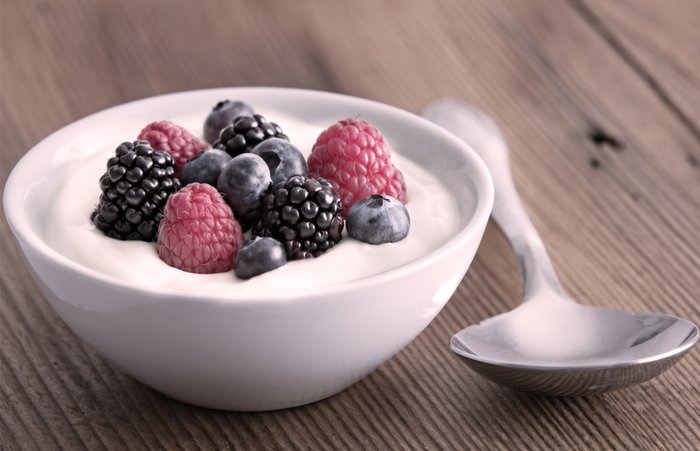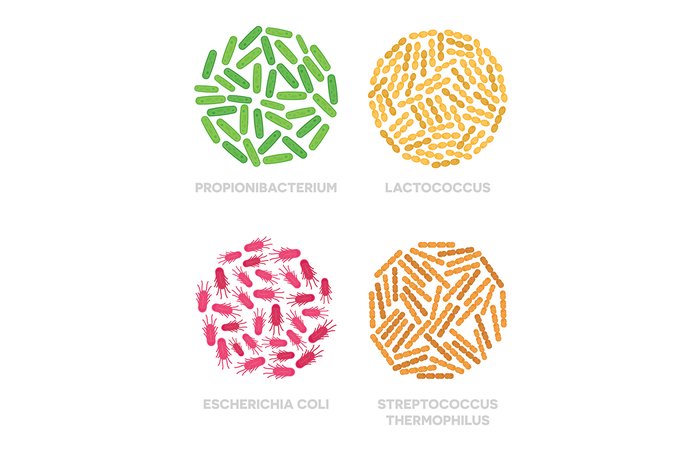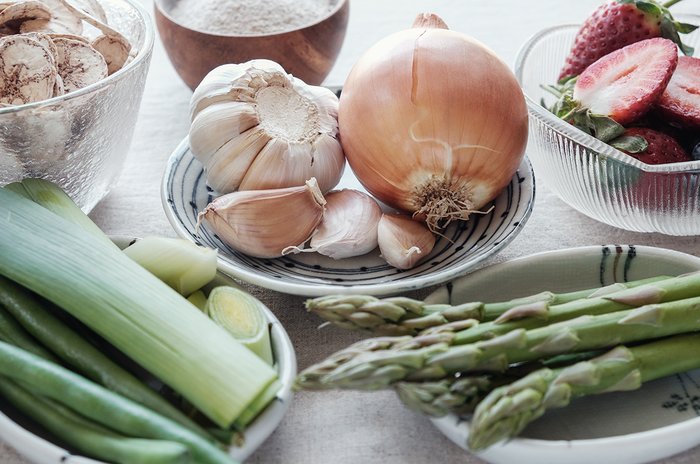Every one of us has a combination of "good" and "bad" bacteria playing constant tug of war inside our body. When you're out of whack with too much bad bacteria—perhaps brought on by frequent use of antibiotics, your diet, high levels of stress, or all of the above—it can kill off too much of the good bacteria. Conversely, the bad stuff, which can cause everything from digestive trouble to nutrient deficiencies, is thought to be able to be minimized by the presence of healthy bacteria.
So when your good gut bacteria are outmanned by bad bacteria, where do you get your reinforcements? It's more popular than ever for people to get at least some of their probiotics from fermented or cultured foods, like yogurt, kefir, sauerkraut, kimchi, and kombucha.

However, it's also more popular than ever to use supplements, especially since you can get multiple strains of bacteria in one dose. Regular supplementation with probiotics can also help address potential imbalances, especially since the probiotic content in foods isn't nearly as high as you might be led to believe.[1]
When you're staring at that refrigerated case or website, reading labels and trying to decide which of the dozens of probiotic products to use, here's what to keep in mind.
The More Strains the Better
There are many types of probiotic bacteria species, but the two most common are lactobacillus and bifidobacterium. You'll find one or both in most probiotic supplements, as well as in fermented dairy, like yogurt and kefir.
However, there are also numerous strains that exist within these categories. As a rule of thumb, the more strains the better, says food scientist and nutritionist Joy Dubost, R.D. She suggests choosing a supplement with at least three or more different strains, since they each have unique functions that can complement each other. More importantly, multiple strains give you a better chance of having at least a few strains colonize in the digestive tract.

Take Your Age and Gender into Consideration
Ever wonder why many probiotic blends are geared toward seniors? The bacterial mix in your intestinal system—sometimes called the gut microbiome—can change with age, general health, and diet.
Another consideration is your sex. For women, probiotics can keep the vaginal area more acidic, which helps prevent issues with bad bacteria down there. Problems like urinary tract infections and bacterial vaginosis have been associated with a deficiency in beneficial gut bacteria. The strains that appear to be most effective at reducing risk are lactobacillus rhamnosus and lactobacillus reuteri, but there are also specific blends for women that may provide additional strains.[2]
Think Billions
Probiotic bacteria work by forming colonies, and you need quite a lot of them for that. That's why supplements are sold according to how many billion bacteria are present at the time of manufacturing.
But more is not always better, or even necessary. If you're in general good health and seem to have a robust digestive system without probiotics, three billion would be fine for daily maintenance. Seniors should aim higher, at around 20-50 billion, which is also the level recommended for travel and stress—two conditions that tax your immune system the most.
If you've recently taken antibiotics or have a compromised digestive system, you may want to start at the higher end of the range, at 50 billion. There hasn't been enough research to suggest that going higher than that will confer added benefits.

Keep Quality in Mind
If you've narrowed down the choices to a multi-strain formula that's specific to your age or condition, the next step is making sure it's a quality product. That means checking expiration dates and reading the label or packaging to ensure it's been manufactured with live probiotic strains.
Storage matters as well. Leaving probiotics at room temperature won't cause them to go bad, but they will often lose some of their potency, resulting in a decreased benefit. Refrigeration can help to prolong most probiotics and help them maintain higher counts over a longer period of time.[3]
Add Prebiotics
You can improve the effectiveness of probiotics by including more prebiotics in your diet, as well. Prebiotics are a type of fiber that fuel good bacteria; basically, they're what probiotics eat to stay healthy. They can be found in foods like oatmeal, asparagus, artichokes, bananas, whole grains, flaxseed, leeks, onions, and garlic.

Some supplements have prebiotics as part of the mix, but you can also integrate them by taking your probiotics alongside prebiotic food sources, says Jo Ann Hattner, RD, co-author of the book Gut Insight: Probiotics and Prebiotics for Health and Well-Being.
"Prebiotics can help the probiotics in your supplements 'wake up' in the body," she says. "That means you'll be using more of them, and getting more health benefits."
References:
- Allgeyer, L. C., Miller, M. J., & Lee, S. Y. (2010). Sensory and microbiological quality of yogurt drinks with prebiotics and probiotics. Journal of Dairy Science, 93(10), 4471-4479.
- Falagas, M. E., Betsi, G. I., Tokas, T., & Athanasiou, S. (2006). Probiotics for prevention of recurrent urinary tract infections in women. Drugs, 66(9), 1253-1261
- Mortazavian, A. M., Ehsani, M. R., Mousavi, S. M., Rezaei, K., Sohrabvandi, S., & Reinheimer, J. A. (2007). Effect of refrigerated storage temperature on the viability of probiotic micro‐organisms in yogurt. International Journal of Dairy Technology, 60(2), 123-127.

